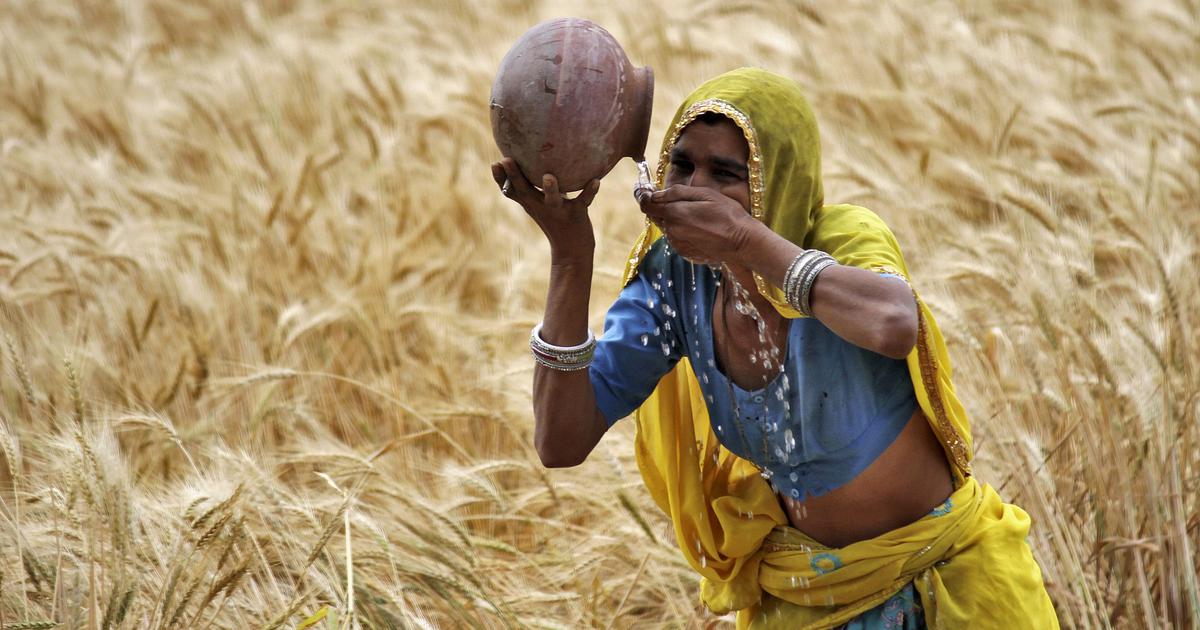Extreme weather conditions have dramatically affected agriculture in South Asia, putting countries at risk of food insecurity. This year, India has reported its highest temperature in 122 years, while Pakistan in March documented the highest global positive temperature anomaly. In addition to scorching temperatures, the two countries also experienced dry weather, as Pakistan and India both recorded 62% percent and 71% below-average rainfall, respectively.
With temperatures reaching almost 50°C, extreme heatwaves in Pakistan and India have killed dozens of people, leaving others struggling with their ordinary daily lives. However, while people living in cities contend with the unbearable conditions brought about by the hot weather, the rural population is at high risk due to the damage that heat waves can cause to agriculture. Sumalee Khosla, a Climate Change Adaptation Finance Expert at the United Nations Environment Programme (UNEP), commenting on the situation in South Asia, noted:
“Extreme heat has major repercussions for the agricultural sector. Climate-related heat stress will increase drought and exacerbate water scarcity for irrigation. This impacts farming communities and potentially creates further food security issues in affected countries.”
Touching 50°C is not the only threat to agriculture. Unexpected seasonal meteorological changes are of the most concern. This year South Asia failed to benefit from the fully expected spring weather because instead the harsh winter weather was followed by scorching summer temperatures. Pakistan, for instance, has recorded an above 40°C average temperature since March of this year. Previously, such a temperature would have been normal at the peak of summer. UNDP Pakistan’s Assistant Resident Representative, Amanullah Khan, in his recent interview with Al-Jazeera commented:

“It’s not as if the agriculture of this country has not seen temperatures of 41°C or 43°C – the problem is that crops need certain temperatures at a certain time of their growth. If the heat arrives earlier than usual, this will manifest in the country not producing good crops such as wheat.”
According to Khan, despite being a net wheat exporter, Pakistan imported this commodity from abroad in 2021, a warning sign showing how the extreme weather has already damaged agriculture.
Besides threatening to damage agriculture, climatic shocks risk triggering food insecurity in a region with over 1 billion population. Wheat prices are already soaring globally partly due to the ban that India, the second-largest wheat producer, has imposed on exports. However, the situation may worsen as the sweltering weather is expected to persist further. The IFRC, in partnership with C40 Cities, has warned cities to prepare for dangerous and deadly heatwaves. Executive Director of C40 Cities Mark Watts said:
“Cities that are used to hot weather need to prepare for even more extended periods of sweltering heat, and cooler cities need to prepare for levels of extreme heat that they are not accustomed to.”
Climate scientists state that acute heatwaves like those recorded this year in Pakistan and India are now 30 times more likely to occur because of emerging global warming and climate change. If such weather had happened in the pre-industrial time, it would have been 1C cooler than at present. This implies that similar weather events will occur more often with even higher temperatures in the future.

